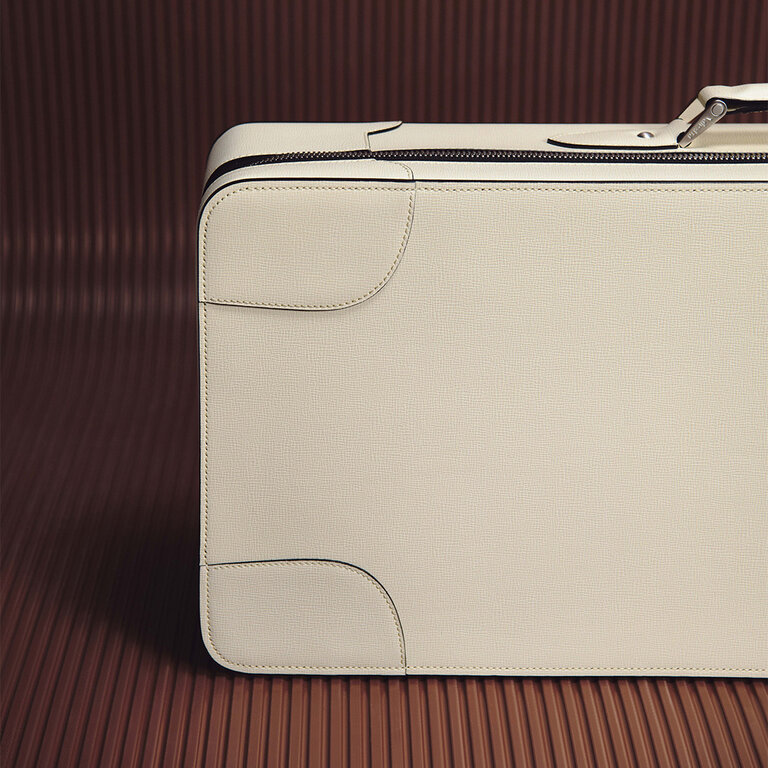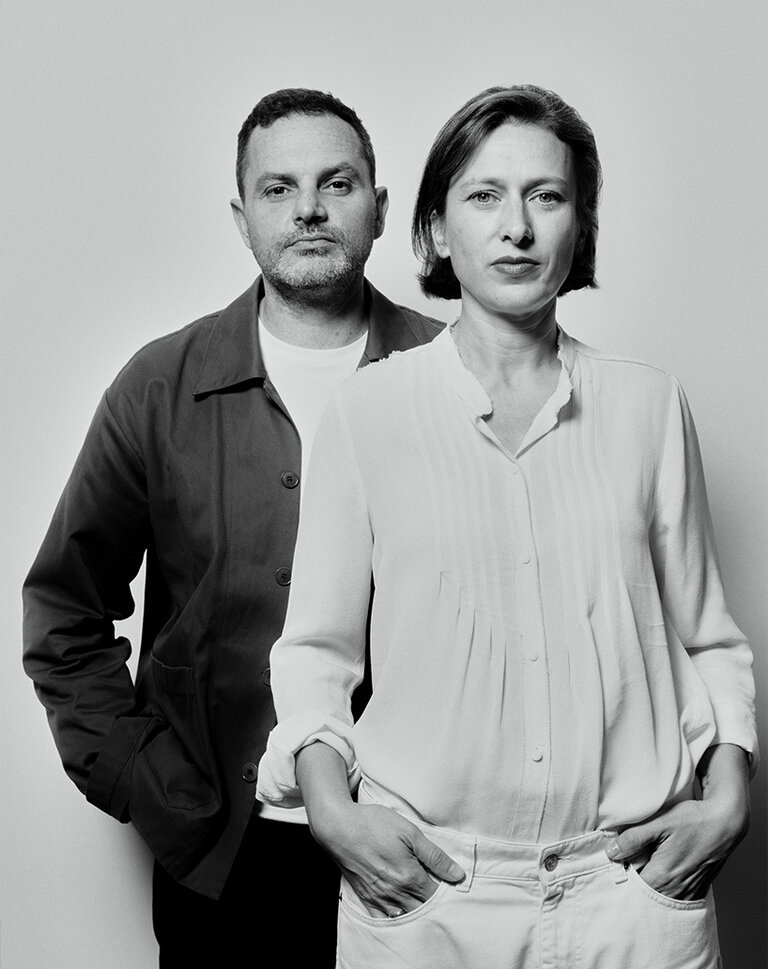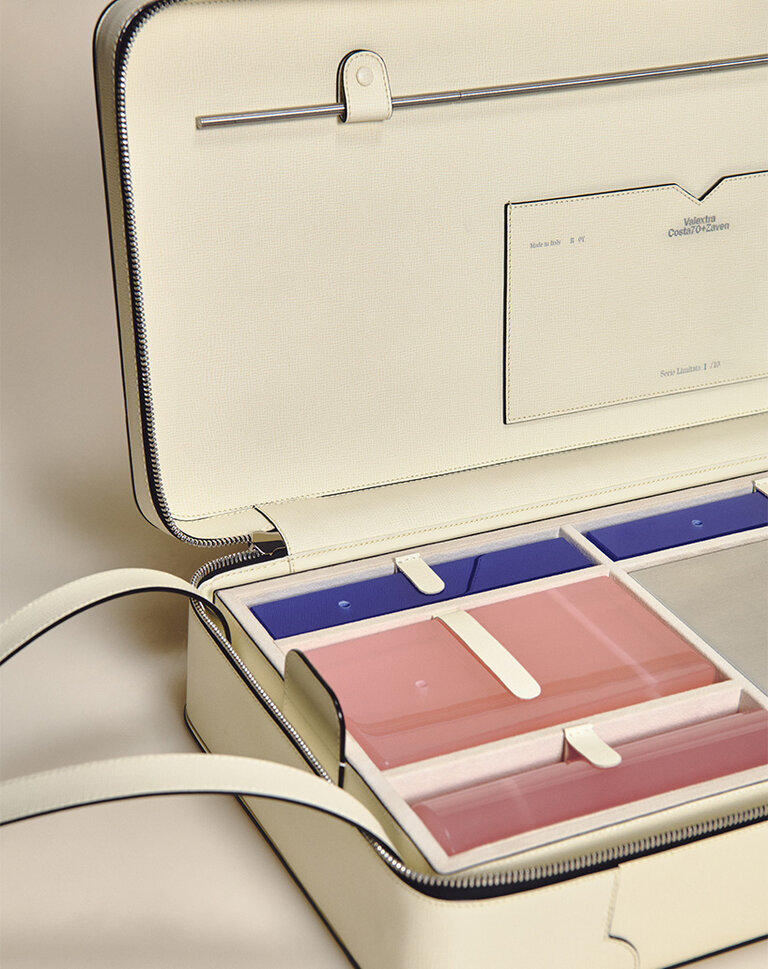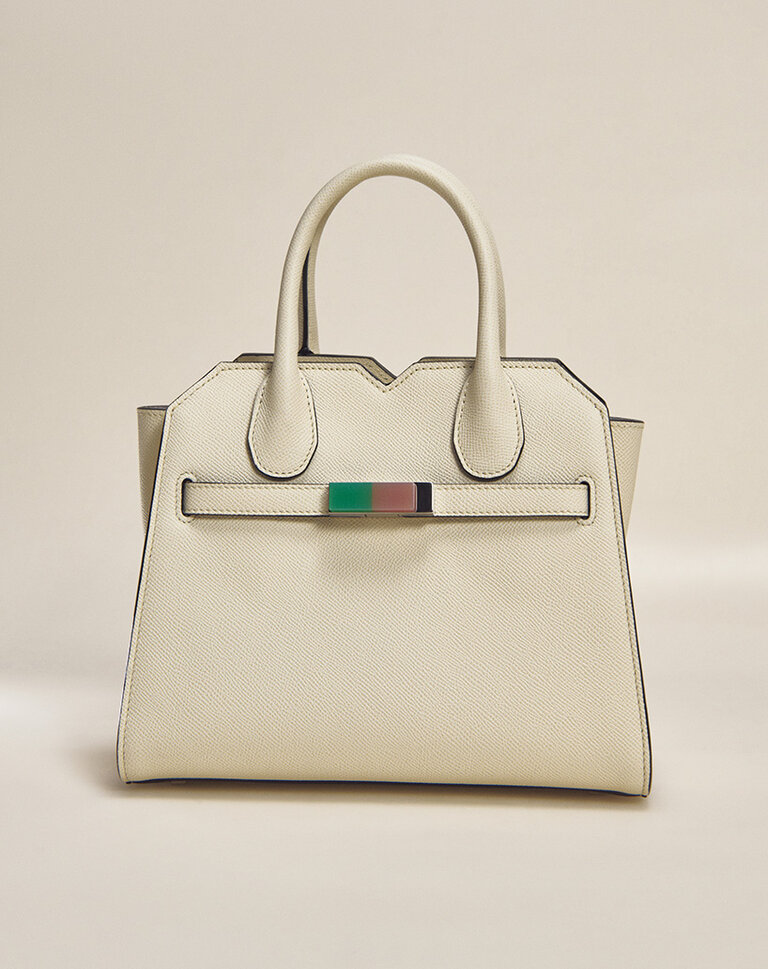

Valextra Meets Zaven
The team behind the Venice-based multidisciplinary studio shares its thoughts on process, passing down knowledge, and collaborating with Valextra for Salone.

For Salone del Mobile 2025, Valextra looked to celebrate our excellence in Milanese design and craftsmanship in a way that spotlights the individuality of our exceptional leather goods. To do so, we partnered with Venice-based Zaven to create a contemporary object of design excellence celebrating our shared pursuit of interaction through architectural experimentation and composition: the Costa70+Zaven suitcase. To accompany the installation, two limited-edition handbags - the Iside Resin Dyes Mini and Milano Resin Dyes Mini - have been engineered with colourful resin handles and archive-inspired closures to reflect the spontaneous spirit of Zaven’s work.
As the project is unveiled at Milan Design Week, we talk to Zaven founders Enrica Cavarzan and Marco Zavagno to discover their stimuli and ethos of their shared studio.
Valextra: How do you describe Zaven?
Zaven: Zaven is a multidisciplinary design studio where research and experimentation play a fundamental role. We navigate the intersections between graphic design, product design, and visual communication, always exploring the dialogue between form and function. Collaboration is at the core of our practice; we believe that the exchange of ideas and perspectives leads to more meaningful and impactful projects.
V: How did you meet and what made you want to start your studio together?
Z: We met during our studies and quickly realised that we shared a similar curiosity for design and its ability to shape experiences. What led us to create Zaven was the desire to build a space where we could freely experiment, push boundaries, and develop a language of our own. The studio became a platform to explore design beyond its conventional definitions, always questioning and evolving.
V: Your work famously focuses on interactions between two entities – why does this approach appeal to you?
Z: We have always been fascinated by relationships - between materials, colours, disciplines, and even between people. Design, for us, is a conversation. By focusing on interactions, we create pieces that invite engagement and dialogue, rather than just static objects. This duality reflects the way we work as a duo and how we see design as a continuous exchange.


V: What drew you to the Costa70+Zaven collaboration for Valextra?
Z: The project was a beautiful opportunity to explore Valextra’s heritage while bringing in our perspective. The Costa suitcase is an icon of timeless elegance, and we were intrigued by the idea of reinterpreting it through our lens. One of the key elements in our design approach is creating space for the end user to interpret, interact with, and ultimately shape the final outcome of our designs.
In this project, for example, we provided a set of modular elements that can be arranged freely, allowing users to compose micro-architectures or sculptures within a space. This concept plays with the idea of balance and colour, transforming the suitcase into an open-ended system that encourages play and exploration. We love the idea that design is not a finished statement but rather an evolving conversation between the object and the person engaging with it.
V: Have you made sculpture from the suitcase? If so, what did you make and what did it look like?
Z: We have explored many possibilities with it. From the very first maquette we built in the studio using wooden and foam blocks to the final object, the process has been a continuous exploration of form and balance. We have favoured lightweight compositions with a few elements that appear to float in space. Interacting with these elements is not just an interesting design exercise but also a meditative experience, an engaging way to step away from stress and embrace a moment of creative play.
V: Did the process of the project present anything unexpectedly interesting to you both?
Z: Absolutely. Working with such a historically significant object led us to question the relationship between design and memory. We found ourselves drawn to the idea of objects as witnesses of time, carrying stories and experiences. This pushed us to think beyond aesthetics, focusing on the emotional and narrative layers of design. Additionally, the process revealed how deconstruction can be a form of reinterpretation. By breaking down the suitcase into its essential elements, we uncovered new possibilities in form and meaning, reinforcing our belief that every object has latent potential waiting to be discovered.
V: How do you perceive Valextra as a luxury brand in the design space?
Z: Valextra is a brand that embodies a unique balance between tradition and modernity. It is deeply rooted in craftsmanship, yet it constantly seeks innovation. This tension between heritage and contemporary design makes Valextra stand out, not just as a luxury brand, but as a cultural force in the design world.

V: Both Zaven and Valextra have won the Compasso d’Oro – how did it feel to be honoured with this accolade?
Z: Winning the Compasso d’Oro was an incredible honour. It represents recognition not just of a single project but of a design philosophy that values research, precision, and a deep understanding of form. It also reinforces our belief in the importance of experimentation and pushing boundaries while respecting the essence of design.
V: How does being an Italian brand inform your approach to creativity and design?
Z: Italy has a rich history of design and craftsmanship, and this heritage naturally influences our work. There is a deep cultural appreciation for aesthetics, materiality, and storytelling that shapes our approach. However, we are also very conscious of looking beyond tradition, integrating contemporary influences and global perspectives into our practice.
V: You also tutor in design: what is the most important message you like to impart?
Z: One of the key messages we share with students is the importance of curiosity. Design is not just about creating objects; it’s about understanding the world, questioning assumptions, and constantly exploring. We encourage young designers to embrace experimentation, to be fearless in their ideas, and to see design as a tool for dialogue and change.

